Scoliosis: Type, Cause, Symptoms, Diagnosis and Treatment, Exercise
Introduction
Scoliosis is a curvature of the spine. It can affect your posture and cause other health problems, like back pain. Scoliosis often develops in childhood, but it can also develop in adulthood. Scoliosis is a complex condition and can’t be fixed; it needs to be treated to keep it from getting worse.
Scoliosis is a lateral curvature of the spine. it is mostly in a c shape and also an s shape.
Idiopathic scoliosis is the most common cause of the condition in kids and teenagers. This suggests that physicians and researchers are unaware of the cause. However, experts believe that a number of variables contribute to the illness’s progression.
Scoliosis is diagnosed via x-rays and physical examinations of your kid or adolescent. This helps medical professionals in creating a treatment strategy that takes into account the location and degree of the curvature. Milder-curved children and teenagers might only require routine checkups at the doctor. Others could need surgery or bracing.
Most kids and teenagers have normal, active lives with Physical therapy, monitoring, and regular check-ins with the doctor.
Who is at risk of Scoliosis?
Scoliosis may affect anyone. On the other hand, children aged 11 and above often develop the most common kind of scoliosis, which is idiopathic. This kind of scoliosis is more common in girls than in boys. If your sibling, sister, or parent has scoliosis, then your chances of getting it are higher.
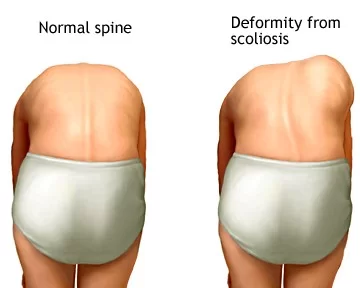
Signs/Symptoms of Scoliosis
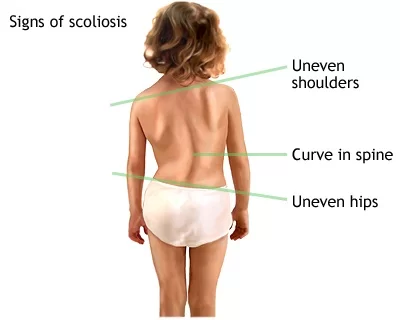
Signs and symptoms of scoliosis may include:
- Uneven shoulders
- One shoulder blade appears more prominent than the other
- Uneven waist
- One hip higher than the other
- When the rib cage bends forward, one side is higher than the other.
- Pain in the back may result from the spine’s altered form if the scoliosis worsens and the curvature becomes more severe. Rarely, if the curvature is really extreme, some kids could have trouble breathing.
If a scoliosis curve gets worse, the spine will also rotate or twist, in addition to curving side to side. This causes the ribs on one side of the body to stick out farther than on the other side.
What are the causes of Scoliosis?
There are three other main types of scoliosis:
→ Functional: In this type of scoliosis, the spine is normal, but an abnormal curve develops because of a problem somewhere else in the body. This could be caused by one leg being shorter than the other or by muscle spasms in the back.
→ Neuromuscular: In this type of scoliosis, there is a problem when the bones of the spine are formed. Either the bones of the spine fail to form completely or they fail to separate from each other during fetal development. This type of congenital scoliosis develops in people with other disorders, including birth defects, muscular dystrophy, cerebral palsy, or Marfan syndrome (an inherited connective tissue disease). People with these conditions often develop a long C-shaped curve and have weak muscles that are unable to hold them up straight. If the curve is present at birth, it is called congenital. This type of scoliosis is often much more severe and needs more aggressive treatment than other forms of scoliosis.
→ Degenerative: Unlike the other forms of scoliosis that are found in children and teens, degenerative scoliosis occurs in older adults. It is caused by changes in the spine due to arthritis known as spondylosis. Weakening of the normal ligaments and other soft tissues of the spine combined with abnormal bone spurs can lead to an abnormal curvature of the spine. The spine can also be affected by osteoporosis, vertebral compression fractures, and disc degeneration.
There are other potential causes of scoliosis, including spine tumors such as osteoid osteoma. This is a benign tumor that can occur in the spine and cause pain. The pain causes people to lean to the opposite side to reduce the amount of pressure applied to the tumor. This can lead to a spinal deformity. In addition, researchers suggest that genetics (hereditary), muscle disorders, and/or abnormal fibrillin metabolism may play a role in causing or contributing to scoliosis development.
Risk factors

Risk factors for developing the most common type of scoliosis include:
Age. Signs and symptoms typically begin during the growth spurt that occurs just prior to puberty.
Sex. Although both boys and girls develop mild scoliosis at about the same rate, girls have a much higher risk of the curve worsening and requiring treatment.
Family history. Scoliosis can run in families, but most children with scoliosis don’t have a family history of the disease.
How to Diagnose?
→If someone thinks he or she has scoliosis, see a doctor for an examination. The doctor will ask questions, including if there is any family history of scoliosis, or if there has been any pain, weakness, or other medical problems.
→The physical examination involves looking at the curve of the spine from the sides, front, and back. The person will be asked to undress from the waist up to better see any abnormal curves, physical deformities, or uneven waist.
→The person will then bend over trying to touch their toes. This position can make the curve more obvious. The doctor will also look at the symmetry of the body to see if the hips and shoulders are at the same height, leaning to one side, or if there is sideways curvature. Any skin changes will also be identified that can suggest scoliosis due to a birth defect. A doctor may check your range of motion, muscle strength, and reflexes.
COBB ANGLE MEASUREMENT
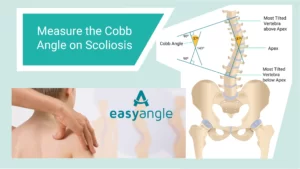
→A Cobb angle of 10 degrees is regarded as a minimum angulation to define Scoliosis.
→A scoliosis curve of 10 to 15 degrees normally does not require any treatment and generally recovers with regular exercise and braces.
→If the scoliosis curve is 20 to 40 degrees, a doctor will generally prescribe a back brace to keep the spine from developing more of a curve.
→The more growth that a person has remaining increases the chances of scoliosis getting worse. As a result, the doctor may measure the person’s height and weight for comparison with future visits. Other clues to the amount of growth remaining are signs of puberty such as the presence of breasts or pubic hair and whether menstrual periods have begun in girls.
→If the doctor believes a patient has scoliosis, the patient could either be asked to return for an additional examination in several months to see if there is any change or the doctor may obtain X-rays of the back. If X-rays are obtained, the doctor can make measurements from them to determine how large of a curve is present. This can help decide what treatment, if any, is necessary. Measurements from future visits can be compared to see if the curve is getting worse.
→It is important that the doctor knows how much further growth the patient has left. Additional X-rays of the hand, wrist, or pelvis can help determine how much more the patient will grow. If a doctor finds any changes in the function of the nerves, he or she may order other imaging tests of your spine, including an MRI or CT scan to look more closely at the bones and nerves of the spine.
→If the curve <20 degrees needs observation and exercise, >20 requires treatment, between 20-40 requires Milwaukee brace and physiotherapy exercise, and>40 surgical corrections are needed.
Treatment of Scoliosis
Scoliosis Treatments are Variable mostly mild, Moderate, or Severe.
Mild Scoliosis
- Do Not Require Any Medicine.
- Symptoms Are Not seen Easily.
- No Braces are required.
- Simple Corrective Physiotherapy Exercise is Enough to Normalize Curve.
- Follow-up is required at regular intervals.
Moderate Scoliosis:
- Pain, Muscle Spasm, And Other Symptoms are visible and Require medical treatment.
- Medical treatments are mostly accordingly symptomatic.
- Braces Are required to reduce the curve.
- Physiotherapy Exercise 2 times a day.
- Spine mobilization exercise.
- Muscle Strengthening And Stretching Exercise.
Severe Scoliosis:
- Symptoms are clearly visible and require medical and even sometimes surgical treatment.
- If symptoms are not progressive then medical, physiotherapy exercise, and Braces are enough but if progressive scoliosis surgery is preferable.
- Surgery depends upon the severity and progressiveness of scoliosis.
- Braces And Physiotherapy treatment are also required simultaneously.
- Post-operative Physiotherapy sessions are also required.
Physiotherapy Treatment of Scoliosis:
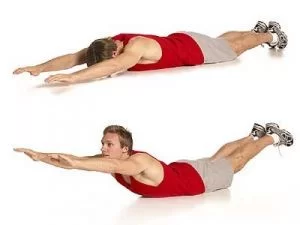
Physiotherapy Treatment Varies According to symptoms And Curvature of the spine and severity. A few Common exercises are as per Below.
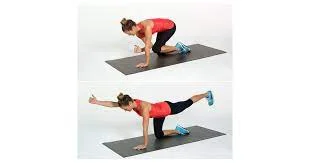
- Dog crawl
- Low dog crawl
- Arm stretch
- Deep breathing exercise
- Spine Mobilization
- Active range of motion (ROM) exercise of the spine
- Strengthening exercises for abdominal and spinal muscle
- Passive stretching of the muscles on the concave side of the curves is highly effective
- Hanging Exercise.
Physiotherapy Treatment After Surgery:
First 4 Days: Vigorous chest PT, patient turns to side every 2 hours, active ROM exercise within pain limit for shoulder and ankle, at the end full range active and passive movement of hip and knee joint are carried out.
After 4 Days: With assisted guidance patient was taught to sit, roll, stand, and walk. And Follow Strengthening Exercises of Weak Spinal muscles around the Upper Back, Middle Back, And Lower Back Area.
BRACES:
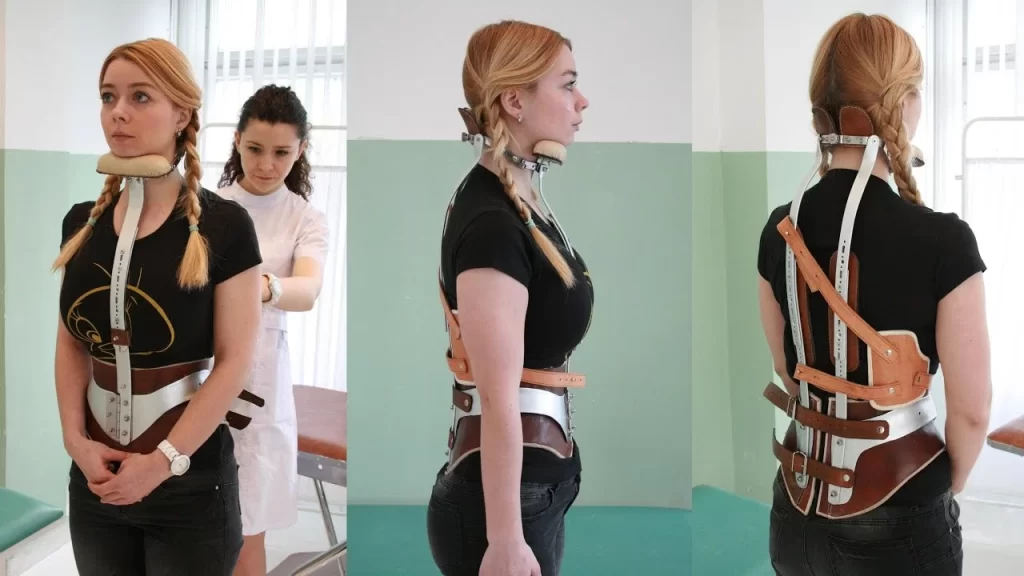
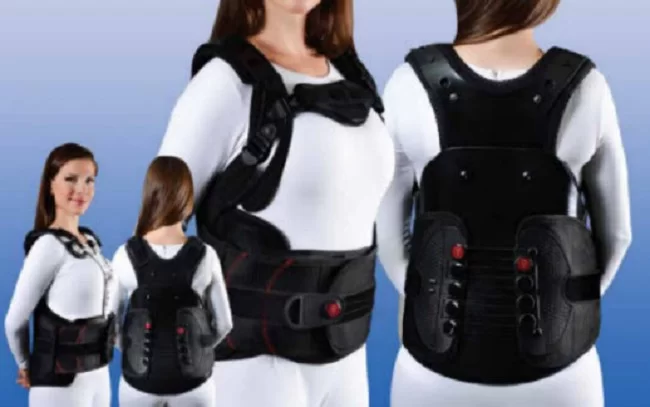
If the patient has moderate scoliosis and the bones are still growing, the doctor may recommend a brace. This will prevent further curvature, but will not cure or reverse it.
Braces are usually worn NOT all the time, even at night. The more hours per day the patient wears the brace, the more effective it tends to be.
There are two types of braces:
Thoracolumbosacral orthosis (TLSO) – the TLSO is made of plastic and designed to fit neatly around the body’s curves. It is not usually visible under clothing.
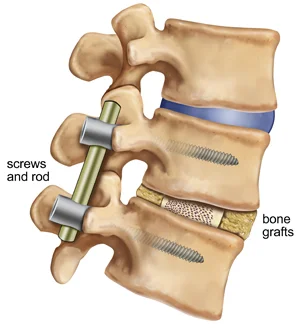
Milwaukee brace – this is a full-torso brace and has a neck ring with rests for the chin and the back of the head. This type of brace is only used when the TLSO is not possible or not effective.
Surgery:
Severe scoliosis typically progresses with time, suggest scoliosis surgery to reduce the severity of the spinal curve and to prevent it from getting worse.
In spinal fusion: surgeons connect two or more of the bones in the spine (vertebrae) together, so they can’t move independently. Pieces of bone or bone-like material are placed between the vertebrae. Metal rods, hooks, screws, or wires typically hold that part of the spine straight and still while the old and new bone material fuses together. Spinal Fusion restricts movement that’s why the least preferred option in scoliosis.
How is scoliosis treated?
The following medical professionals can treat children and teenagers with scoliosis:
- Orthopaedists are doctors who specialize in treating and operating on conditions affecting the bones and joints.
- Children’s physicians and practitioners.
- Physical therapists: they suggest stretching and strengthening exercises and ergonomics that help to correct curvature.
- Primary care physicians are examples of this type of practitioner.
- Orthosis suggests braces that also help in correcting deformity
Living With Scoliosis
The following advice may be helpful to your adolescent or kid who has scoliosis.
Although they have not been thoroughly researched, routines of exercise may prevent scoliosis from worsening. Frequent exercise keeps your adolescent or youngster physically fit and builds muscle. Exercises involving weight bearing, like football, jogging, or walking, maintain healthy bones. Consult your child’s physician about taking part in extracurricular activities and sports.
Your teen or kid may experience embarrassment or self-consciousness if they wear a brace. It is imperative that the brace is used in accordance with the instructions to potentially alleviate discomfort and avoid surgery. Consult the doctor about other bracing or therapy alternatives if your adolescent or kid refuses to wear their brace.
Joining a local or virtual support group for kids, teenagers, or parents with scoliosis is something to think about. You and your kid or adolescent can deal with scoliosis and its treatment together with the aid of programmes and support groups.
Conclusion
Scoliosis is a medical condition characterized by an abnormal curvature of the spine. It can develop in various forms and degrees of severity, affecting individuals of all ages. While some cases are mild and easily recover with exercise, others can cause pain, discomfort, and functional limitations.
Regular tests are essential for early diagnosis, which is necessary for efficient treatment. Treatment options range from observation and physical therapy to bracing and, in severe cases, surgical intervention.
Overall, timely diagnosis and appropriate intervention play key roles in addressing scoliosis and minimizing its impact on an individual’s health and well-being.
FAQ
What is the main cause of scoliosis?
Idiopathic scoliosis is the term for the disease in which the origin of scoliosis is unclear in over 80% of instances. In other situations, scoliosis may arise from a congenital disorder that typically runs in families, arthritis, osteoporosis, or deterioration of the spinal discs.
How can I fix scoliosis naturally?
To fix scoliosis naturally:
Every morning, stretch/strength exercise. Daily stretching and strengthening exercises can help correct some of the imbalances caused by scoliosis and enhance spinal health.
Maintain Warm Joints.
Consume a diet low in inflammation.
Use vitamins as a supplement.
Use a Firm Mattress to Sleep.
Consult a Physical Therapist to Start Treating Scoliosis.
What are the 4 symptoms of scoliosis?
4 symptoms of scoliosis are:
1. Uneven shoulder heights: One shoulder appearing higher than the other may indicate scoliosis.
2. Uneven hip levels: An asymmetry in the hips, with one side higher than the other, can be a symptom.
3. Spinal curvature: A noticeable sideways curve of the spine, forming an “S” or “C” shape.
4. Back pain or discomfort: Scoliosis can sometimes cause pain or discomfort, particularly as the condition progresses.
Is scoliosis a serious problem?
The majority of scoliosis instances are moderate, however, some curvature gets worse as kids get older. Entire scoliosis can be disabled. A particularly severe curvature of the spine may result in less room in the chest, which might compromise the healthy functioning of the lungs.
Can scoliosis be cured?
It is not possible to treat scoliosis. Therefore, scoliosis cannot be completely corrected, at least not entirely. Nonetheless, there are ways to treat scoliosis that might help “correct” the curvature by lessening its angle and enhancing spinal alignment.
How painful is scoliosis?
Sometimes, scoliosis can irritate or put a strain on the nerves in and around your spine, resulting in lower back pain, tingling in the lower extremities, and numbness. Steroid and local anaesthetic injections into your back may be helpful in these situations.
Can scoliosis go away naturally?
The quick response is no. It’s a progressive illness, so things might become worse if nothing is done. Physical therapy interventions tailored to the specifics of scoliosis can help control it, nevertheless. With this customized care, the curvature may be strengthened and its advancement and deterioration can be halted.

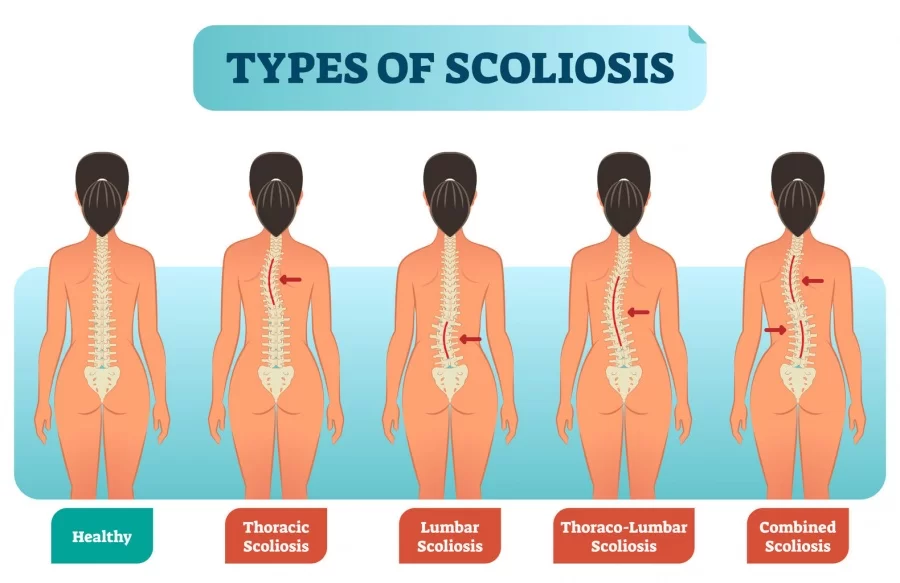
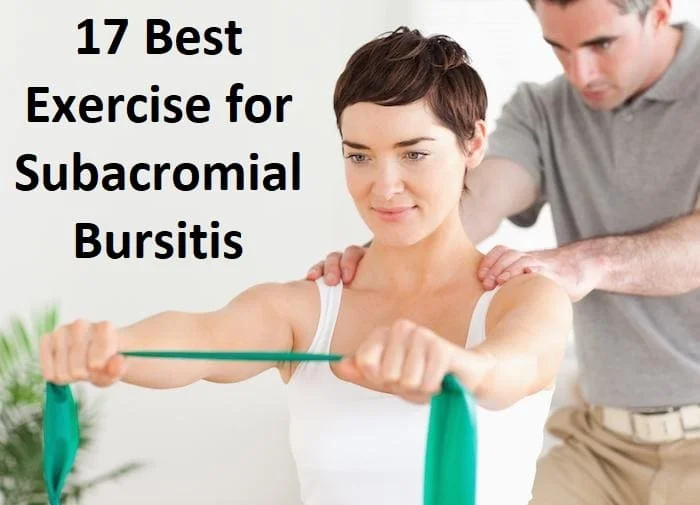

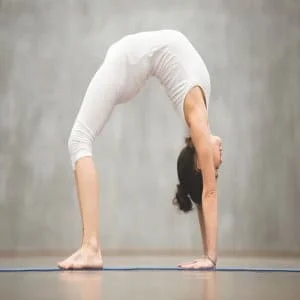

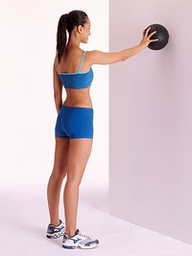
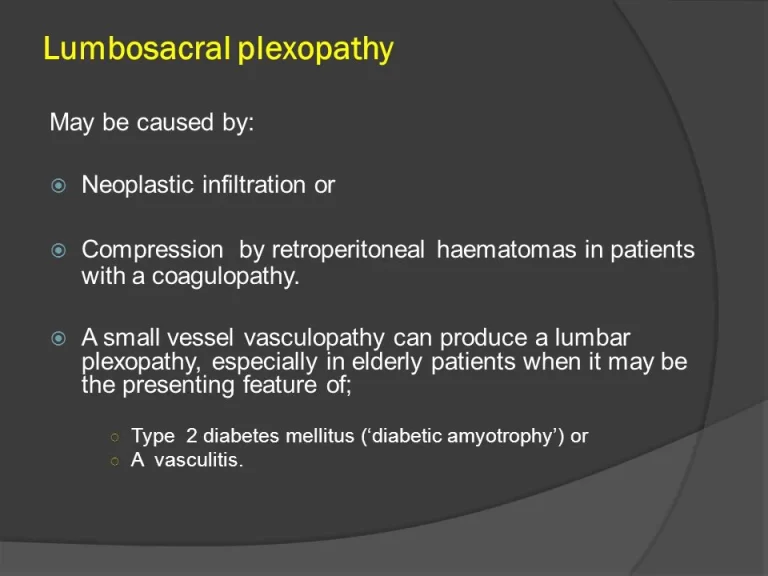
35 Comments